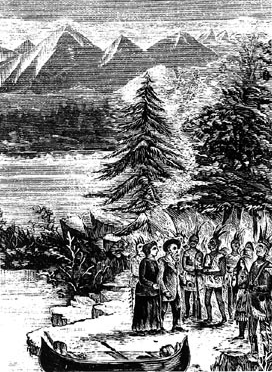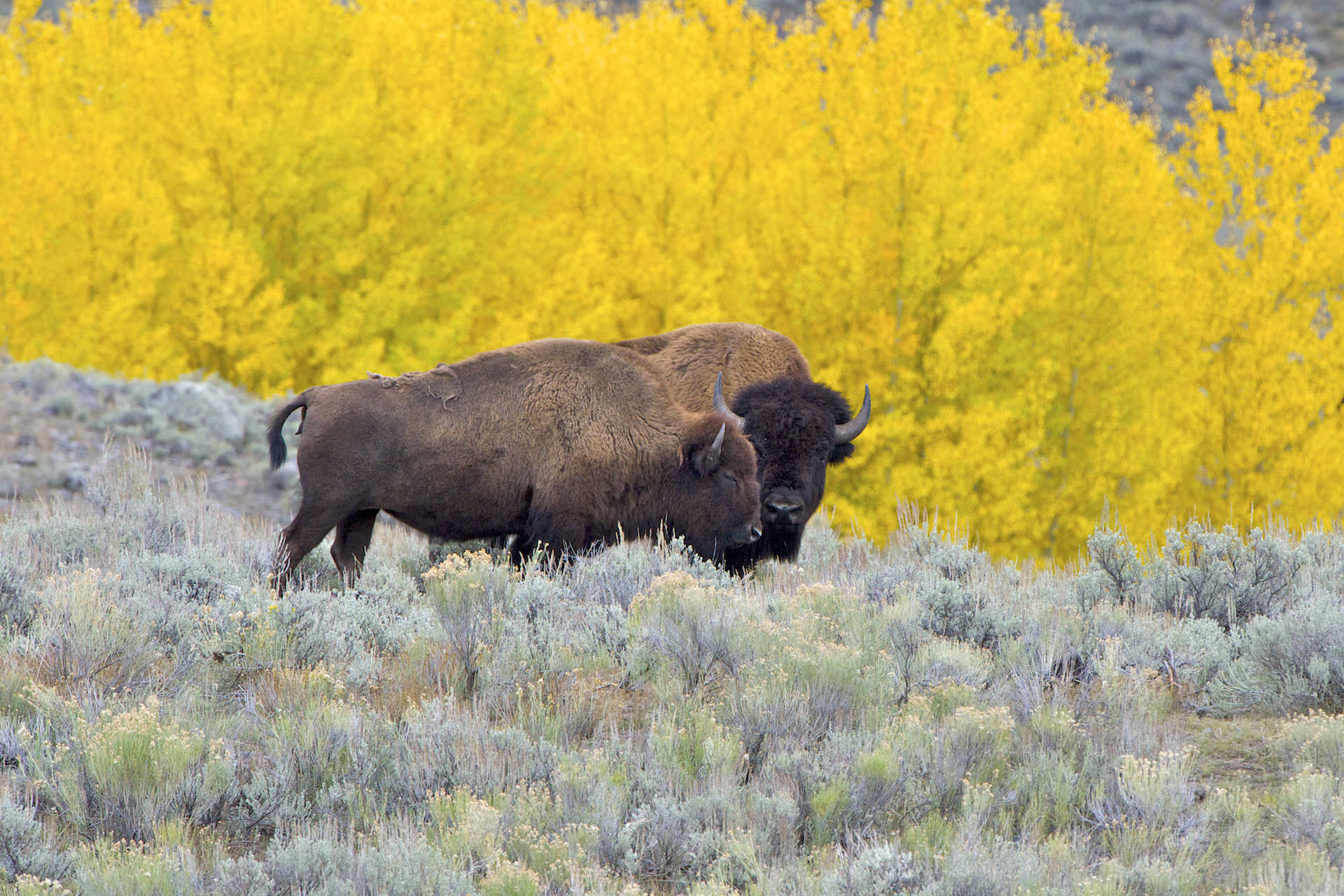|
Marie-Anne Gaboury
Marie-Anne Lagimodière (née Gaboury; 15 August 1780 – 14 December 1875) was a French-Canadian woman noted as both the grandmother of Louis Riel, and as the first woman of European descent to travel to and settle in what is now Western Canada.Lester, Tanya. "A Strong Woman". Indian Record'. Vol. 48–50. Oblate Fathers; 1985. p. 10. Early life Gaboury was born in Maskinongé, Quebec, a village near modern Trois-Rivières.Maggie Siggins. Marie-Anne: The Extraordinary Life of Louis Riel's Grandmother'. McClelland & Stewart; 13 October 2009. . p. unpaged. As a young woman, she kept house for a priest there until her marriage on 21 April 1806 to Jean-Baptiste Lagimodière.Historical and Scientific Society of Manitoba. Transaction[s]'. 1888. p. 23–. Lagimodière was originally from nearby Saint-Ours; he had become a coureur des bois employed in the fur trade by the Hudson's Bay Company in Rupert's Land. Travels in the west Immediately following their marriage, ... [...More Info...] [...Related Items...] OR: [Wikipedia] [Google] [Baidu] |
Maskinongé, Quebec
Maskinongé () is a municipality in the Mauricie region of the province of Quebec in Canada Canada is a country in North America. Its Provinces and territories of Canada, ten provinces and three territories extend from the Atlantic Ocean to the Pacific Ocean and northward into the Arctic Ocean, making it the world's List of coun .... References External links * Incorporated places in Mauricie Municipalities in Quebec Canada geography articles needing translation from French Wikipedia {{Quebec-geo-stub ... [...More Info...] [...Related Items...] OR: [Wikipedia] [Google] [Baidu] |
Winnipeg, Manitoba
Winnipeg () is the capital and largest city of the Provinces and territories of Canada, Canadian province of Manitoba. It is centred on the confluence of the Red River of the North, Red and Assiniboine River, Assiniboine rivers. , Winnipeg had a city population of 749,607 and a metropolitan population of 834,678, making it Canada's List of the largest municipalities in Canada by population, sixth-largest city and List of census metropolitan areas and agglomerations in Canada, eighth-largest metropolitan area. The city is named after the nearby Lake Winnipeg; the name comes from the Cree language, Western Cree words for 'muddy water' – . The region was a trading centre for Indigenous peoples in Canada, Indigenous peoples long before the European colonization of the Americas, arrival of Europeans; it is the traditional territory of the Anishinaabe (Ojibway), Ininew (Cree), Oji-Cree, Dene, and Dakota people, Dakota, and is the birthplace of the Métis people in Canada, Métis ... [...More Info...] [...Related Items...] OR: [Wikipedia] [Google] [Baidu] |
Edmonton, Alberta
Edmonton is the capital city of the Provinces and territories of Canada, Canadian province of Alberta. It is situated on the North Saskatchewan River and is the centre of the Edmonton Metropolitan Region, which is surrounded by Central Alberta, Alberta's central region, and is in Treaty 6, Treaty 6 territory. It anchors the northern end of what Statistics Canada defines as the "Calgary–Edmonton Corridor". The area that later became the city of Edmonton was first inhabited by First Nations in Alberta, First Nations peoples and was also a historic site for the Métis in Alberta, Métis. By 1795, many trading posts had been established around the area that later became the Edmonton census metropolitan area. "Fort Edmonton", as it was known, became the main centre for trade in the area after the 1821 merger of the Hudson's Bay Company and the North West Company. It remained sparsely populated until the Canadian acquisition of Rupert's Land in 1870, followed eventually by the arri ... [...More Info...] [...Related Items...] OR: [Wikipedia] [Google] [Baidu] |
Fort Edmonton
Fort Edmonton (also named Edmonton House) was the name of a series of Trading post, trading posts of the Hudson's Bay Company (HBC) from 1795 to 1914, all of which were located on the north banks of the North Saskatchewan River in what is now central Alberta, Canada. It was one of the last points on the Carlton Trail, the main overland route for Métis people (Canada), Metis freighters between the Red River Colony and the points west and was an important stop on the York Factory Express route between London, via Hudson Bay, and Fort Vancouver in the Columbia District. It also was a connection to the Great Northland, as it was situated relatively close to the Athabasca River whose waters flow into the Mackenzie River and the Arctic Ocean. Located on the farthest north of the major rivers flowing to the Hudson Bay and the HBC's shipping posts there, Edmonton was for a time the southernmost of the HBC's forts. From 1795 to 1830 it was located in four successive locations. Prior to 1 ... [...More Info...] [...Related Items...] OR: [Wikipedia] [Google] [Baidu] |
Cree
The Cree, or nehinaw (, ), are a Indigenous peoples of the Americas, North American Indigenous people, numbering more than 350,000 in Canada, where they form one of the country's largest First Nations in Canada, First Nations. They live primarily to the north and west of Lake Superior in the Provinces and territories of Canada, provinces of Alberta, Labrador, Manitoba, the Northwest Territories, Ontario, and Saskatchewan. Another roughly 27,000 live in Quebec. In the United States, the Cree, historically, lived from Lake Superior westward. Today, they live mostly in Montana, where they share Rocky Boy's Indian Reservation with Ojibwe (Chippewa) people. A documented westward migration, over time, has been strongly associated with their roles as traders and hunters in the North American fur trade. Sub-groups and geography The Cree are generally divided into eight groups based on dialect and region. These divisions do not necessarily represent ethnic subdivisions within th ... [...More Info...] [...Related Items...] OR: [Wikipedia] [Google] [Baidu] |
Bear
Bears are carnivoran mammals of the family (biology), family Ursidae (). They are classified as caniforms, or doglike carnivorans. Although only eight species of bears are extant, they are widespread, appearing in a wide variety of habitats throughout most of the Northern Hemisphere and partially in the Southern Hemisphere. Bears are found on the continents of North America, South America, and Eurasia. Common characteristics of modern bears include large bodies with stocky legs, long snouts, small rounded ears, shaggy hair, plantigrade paws with five nonretractile claws, and short tails. While the polar bear is mostly carnivorous, and the giant panda is mostly herbivorous, the remaining six species are omnivorous with varying diets. With the exception of courtship display, courting individuals and mothers with their young, bears are typically solitary animals. They may be diurnality, diurnal or nocturnal and have an excellent sense of smell. Despite their heavy build and awk ... [...More Info...] [...Related Items...] OR: [Wikipedia] [Google] [Baidu] |
Prairie
Prairies are ecosystems considered part of the temperate grasslands, savannas, and shrublands biome by ecologists, based on similar temperate climates, moderate rainfall, and a composition of grasses, herbs, and shrubs, rather than trees, as the dominant vegetation type. Temperate grassland regions include the Pampas of Argentina, Brazil and Uruguay, and the steppe of Romania, Ukraine, Russia, and Kazakhstan. Lands typically referred to as "prairie" (a French loan word) tend to be in North America. The term encompasses the lower and mid-latitude of the area referred to as the Interior Plains of Canada, the United States, and Mexico. It includes all of the Great Plains as well as the wetter, hillier land to the east. From west to east, generally the drier expanse of shortgrass prairie gives way to mixed grass prairie and ultimately the richer and wetter soils of the tallgrass prairie. In the U.S., the area is constituted by most or all of the states, from north to south, of North ... [...More Info...] [...Related Items...] OR: [Wikipedia] [Google] [Baidu] |
Alberta
Alberta is a Provinces and territories of Canada, province in Canada. It is a part of Western Canada and is one of the three Canadian Prairies, prairie provinces. Alberta is bordered by British Columbia to its west, Saskatchewan to its east, the Northwest Territories to its north, and the U.S. state of Montana to its south. Alberta and Saskatchewan are the only two landlocked Canadian provinces. The eastern part of the province is occupied by the Great Plains, while the western part borders the Rocky Mountains. The province has a predominantly humid continental climate, continental climate, but seasonal temperatures tend to swing rapidly because it is so arid. Those swings are less pronounced in western Alberta because of its occasional Chinook winds. Alberta is the fourth largest province by area, at , and the fourth most populous, with 4,262,635 residents. Alberta's capital is Edmonton; its largest city is Calgary. The two cities are Alberta's largest Census geographic units ... [...More Info...] [...Related Items...] OR: [Wikipedia] [Google] [Baidu] |
American Bison
The American bison (''Bison bison''; : ''bison''), commonly known as the American buffalo, or simply buffalo (not to be confused with Bubalina, true buffalo), is a species of bison that is endemic species, endemic (or native) to North America. It is one of two extant species of bison, along with the European bison. Its habitat, historical range ''circa'' 9000 BC is referred to as the great bison belt, a tract of rich grassland spanning from Alaska south to the Gulf of Mexico, and east to the Atlantic Seaboard (nearly to the Atlantic tidewater (geographic term), tidewater in some areas), as far north as New York (state), New York, south to Georgia (U.S. state), Georgia, and according to some sources, further south to northern Florida, with sightings in North Carolina near Buffalo Ford on the Catawba River as late as 1750. Two subspecies or ecotypes have been described: the plains bison (''B. b. bison''), smaller and with a more rounded hump; and the wood bison (''B. b. athabascae ... [...More Info...] [...Related Items...] OR: [Wikipedia] [Google] [Baidu] |
Saskatchewan
Saskatchewan is a Provinces and territories of Canada, province in Western Canada. It is bordered on the west by Alberta, on the north by the Northwest Territories, on the east by Manitoba, to the northeast by Nunavut, and to the south by the United States (Montana and North Dakota). Saskatchewan and neighbouring Alberta are the only landlocked provinces of Canada. In 2025, Saskatchewan's population was estimated at 1,250,909. Nearly 10% of Saskatchewan's total area of is fresh water, mostly rivers, reservoirs, and List of lakes in Saskatchewan, lakes. Residents live primarily in the southern prairie half of the province, while the northern half is mostly forested and sparsely populated. Roughly half live in the province's largest city, Saskatoon, or the provincial capital, Regina, Saskatchewan, Regina. Other notable cities include Prince Albert, Saskatchewan, Prince Albert, Moose Jaw, Yorkton, Swift Current, North Battleford, Estevan, Weyburn, Melfort, Saskatchewan, Melfort, ... [...More Info...] [...Related Items...] OR: [Wikipedia] [Google] [Baidu] |
Saskatchewan River
The Saskatchewan River (Cree: , "swift flowing river") is a major river in Canada. It stretches about from where it is formed by the joining of the North Saskatchewan River and South Saskatchewan River just east of Prince Albert, Saskatchewan. It flows roughly eastward across Saskatchewan and Manitoba to empty into Lake Winnipeg. Through its tributaries the North Saskatchewan and South Saskatchewan, its watershed encompasses much of the prairie regions of Canada, stretching westward to the Rocky Mountains in Alberta and north-western Montana in the United States. Including its tributaries, it reaches to its farthest headwaters on the Bow River, a tributary of the South Saskatchewan in Alberta. Description It is formed in central Saskatchewan, approximately east of Prince Albert, Saskatchewan, Prince Albert, by the confluence of its two major branches, the North Saskatchewan River, North Saskatchewan and the South Saskatchewan River, South Saskatchewan, at the Saskatchewa ... [...More Info...] [...Related Items...] OR: [Wikipedia] [Google] [Baidu] |






